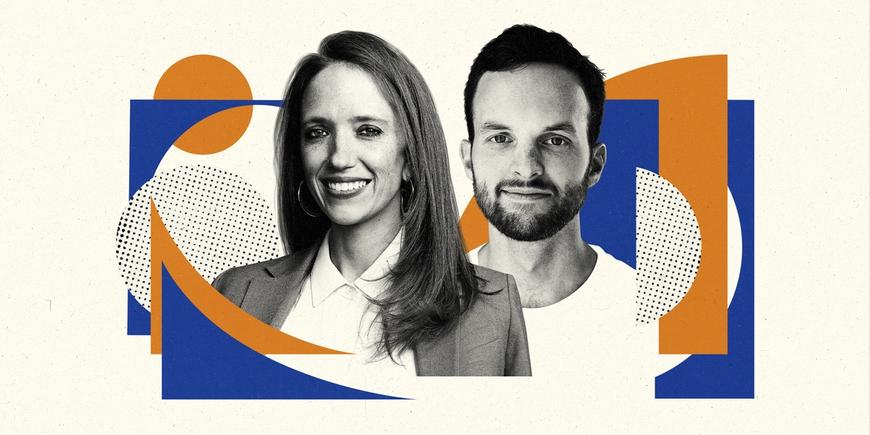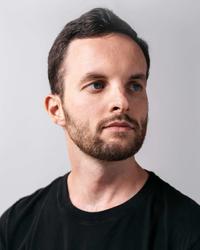How Maven Clinic Is Creating the Next Generation of Care for Women and Families
Women’s health has been ignored by the establishment and challenged by the government. Maven Founder and CEO Kate Ryder continues charging ahead with solutions to help millions of families access better care.

Maven Clinic is on a mission to change healthcare, through an approach that shouldn’t be radical: creating solutions for women and families. Despite the fact women make up half of humanity, the healthcare system has ignored and continues to underserve them. Since 2014, Maven has been a pioneer of what’s now a burgeoning women’s health movement, including startups like Tia Health, Paloma, Allara, and many more.
Founded in 2014 by CEO Kate Ryder, the platform provides support across fertility, family-building, pregnancy, parenting, pediatrics, and menopause. Today, Maven has provided care in over 175 countries and now has more than 15 million lives under management.
I sat down with Ryder ahead of the 2022 midterm elections to discuss her career journey, the implications of a post-Roe world on women’s bodies and reproductive freedom, and how Maven continues to provide critical support for those in need.
Tell me a little about Maven’s origin story and what initially drew you to the world of healthcare.
Maven's origin story goes back to London circa 2013 and 2014. I was working in venture capital and starting to see the first generation of digital health companies really come online. At the same time, I had just turned 30 and my friends were starting to have their first kids. It was incredible the huge gaps in care that they were experiencing, whether with postpartum depression or infertility.
Seeing how there was really nothing walking into the offices of these venture capital firms that were covering women's health and then seeing all of the needs of my own friends and then later myself, it just felt like a no-brainer to try to match that personal journey as well as the business opportunity in digital health.
Women control 80% of decisions in healthcare, and one of the most important ways to drive change in healthcare is to engage women, parents, and the Chief Medical Officers of the homes who are taking care of children and sometimes their own parents. That is, to me, the crux of where change needs to start in the system.
Can you give a little more background in terms of how you initially went to market with Maven, where were you focused, and then how that's perhaps changed over the years?
So now there's a term for how we went to market, which is called B2C2B. Our thesis at the time was that the most important thing that you can do in any kind of technology company or any kind of industry where we're trying to change how things are done through new products is to build a great product. And to build a great product, you need lots of feedback. You need to have a rapid iterative process to make changes and to pivot based on what kind of feedback you're getting from your consumers.
You always have very limited resources in the beginning. So we put all of that into making a great product. We launched in April 2015, knowing that the real business model opportunity was in selling to employers, payers, and the government. Those are the big payers of healthcare.
Maven is fundamentally building a new care model in women's and family health. We have over 30 types of providers across 350 subspecialties. It's a much more holistic model of virtual care that complements all the care you're receiving in person as you're going through these fertility, pregnancy, and parenting journeys.
So we needed to prove that it worked and that consumers liked it. By the time we were talking to our bigger customers, we had all of that data. Then the next step, of course, is making sure it's actually driving the clinical outcomes. Over the last few years, we've been able to prove it does just that.
Was the early data you collected really around consumer engagement? You said the clinical piece came a bit afterward. What were those early data points that you needed to prove?
Yeah, it was consumer engagement and provider engagement. How many appointments were people having? How many messages were they sending? What did repeat behavior look like? Were people posting in the community? What was the response? We were measuring all of those things. Then we were measuring if providers delivered care in a valuable way. Once we had that proven, we were able to bring that to the clients.
As you have scaled the business, what have you had to prove from a clinical standpoint? Now that you're much larger, what do those conversations look like?
The simple equation is patient engagement plus a clinical backbone on the product where we're very intentional about what we're putting in from a clinical standpoint, which leads to outcomes. We can't design this clinical product that nobody uses because then you're not going to get your outcome. So for us, once we honed our engagement and we were able to raise a little bit more money and continue to invest, we had to show engagement in the product, then we had to get early customers.
Employers in our market are looking for clinical ROI but perhaps even more than that, they’re looking for support building DEI across their company. Maven helps with both of these goals. We help women return to work after having a baby. We support LGBTQ families, single moms and single dads going through the family-building process. So just really democratizing pathways to parenthood is something that employers were looking for and they weren't getting that in their plan.
We were providing all of that as we were honing our clinical case studies. Then, we had years of data, so we took the first bit of learnings, fed them back into our product, and continued to learn.
Maven has started working with the Medicaid population as well. What has this journey and transition looked like?
Medicaid is a natural extension of our mission. Nearly 50% of births in this country are paid for by Medicaid, so it's an area that we've always had our sights set on. It's a natural way to continue to fulfill our mission, which is bringing better access to care in our category. You can't only do that with half of the population, particularly with the pandemic exposing so much around health equity and so much need that I think was always there, but we just weren't talking about as much.
I would say the biggest difference with our product is the enrollment side. With employers, our approach is much more digital, and we rely pretty heavily on email outreach to employees. With Medicaid, our approach is much more local, and there are other barriers to engaging, like a fundamental lack of trust in providers and in the healthcare system and sometimes also a lack of actual contact information, or constantly changing phone numbers and addresses. Making an impact with this population requires significant investment and innovation. It's not impossible, but it requires a different approach. As we're getting into Medicaid, that's what we're learning and honing right now.
As we think about the last 12 months and reproductive rights in the United States, it has been a pretty terrible year. How are you approaching this? How do you view it?
The overturn of Roe v. Wade is something that is completely devastating in women's health because so many people are suffering. This is a very black-and-white story of restricting access to care during one of the most vulnerable times in a woman's life, which is going through that family-building process and pregnancy. All the major medical associations have come out and they have said, "This is restricting access. We're going to have adverse patient outcomes. This is not good." Almost one out of four women by the time they're 45 have had an abortion— it is just such a core part of prenatal care.
When we knew it was coming, we started building a pregnancy options counseling program as part of our core maternity program. We’re helping people understand their options, the implications, and the law around all of that. What we're seeing in that product is people who are living in states with restricted access. They might not even be pregnant, they might be wanting to have a baby in a year, but they're so anxious now about their reproductive health that they're thinking about delaying their families until this is figured out.
Then we have a travel reimbursement product through our payments platform, Maven Wallet. Our clients, both payers and employers, are able to support employees who need to travel across state lines to get support and we power that reimbursement process.
Being so close to this world, do you have any predictions for where reproductive rights will go in the U.S. over the next couple of years?
I think the midterms are going to be a really crucial inflection point because a lot of questions around reproductive rights are going directly on ballots. The data speaks for itself. We're starting to see data around maternal morbidities coming out of hospitals in Texas, and other studies suggesting that maternal death rates in states with restricted access to abortion are on average almost two times higher than those in states with laws protecting abortion access.So that's kind of one area. I think that the other area is the economy. If you are restricting access to this core part of prenatal care and you are in a state where already you don't have enough Medicaid dollars to support your population, this is going to lead to a major increase in pregnancies and particularly high-risk pregnancies. States can't afford that.
Going back to Maven, what are the big hurdles and things that you're focused on from a company standpoint over the next 12 to 24 months?
The economy is going to be pretty bleak. The world's in a very fragile place right now. Particularly over the next 12, if not 24 months. So I think it's making sure we're scaling efficiently. Then, from a growth perspective, there are massive amounts of opportunity and growth across the board.
Global fertility is a big one. Fertility is not just underserved in the U.S., it's underserved across the world. If you are a big multinational operating as one team, it's hard to only roll out family-building benefits in the U.S. and not globally, particularly when surrogacy is illegal in some countries—or egg freezing even is. There are a ton of medical tourism implications.There are newer fertility clinics coming online in a lot of these different countries—some high quality, some maybe not. So being able to help navigate that is really important.
You built Maven in New York City. Why has New York been the right place to build the company?
One of the wonderful parts of building in New York is the fact that there's so much diversity here. I think in healthcare you need to have a boots-on-the-ground look at what it's really like for patients. So there's like a grittiness and just a realism to New York about some of this that I love. You're constantly surrounded by people and you're just constantly learning.
